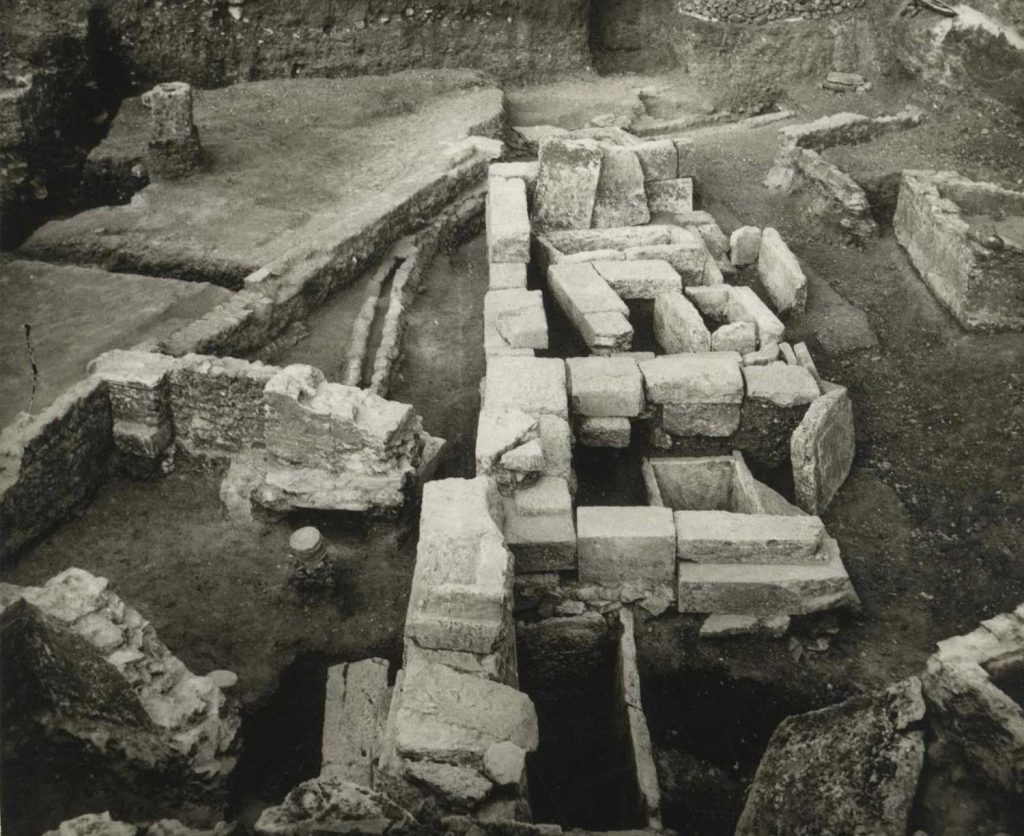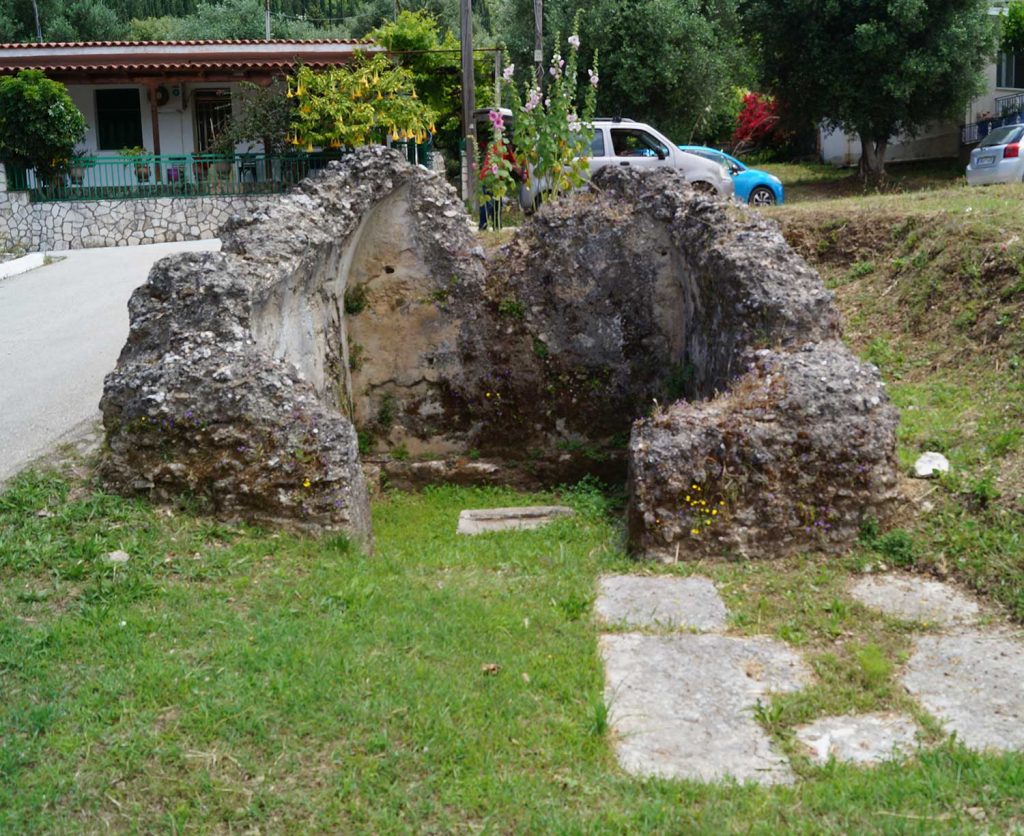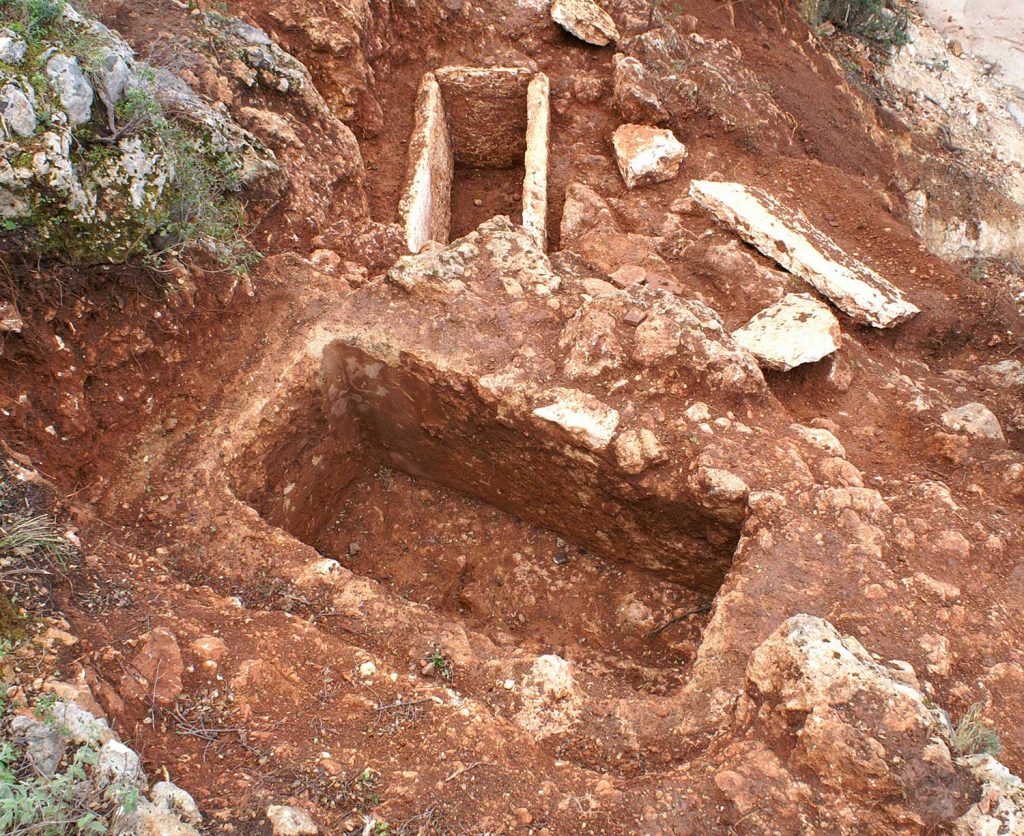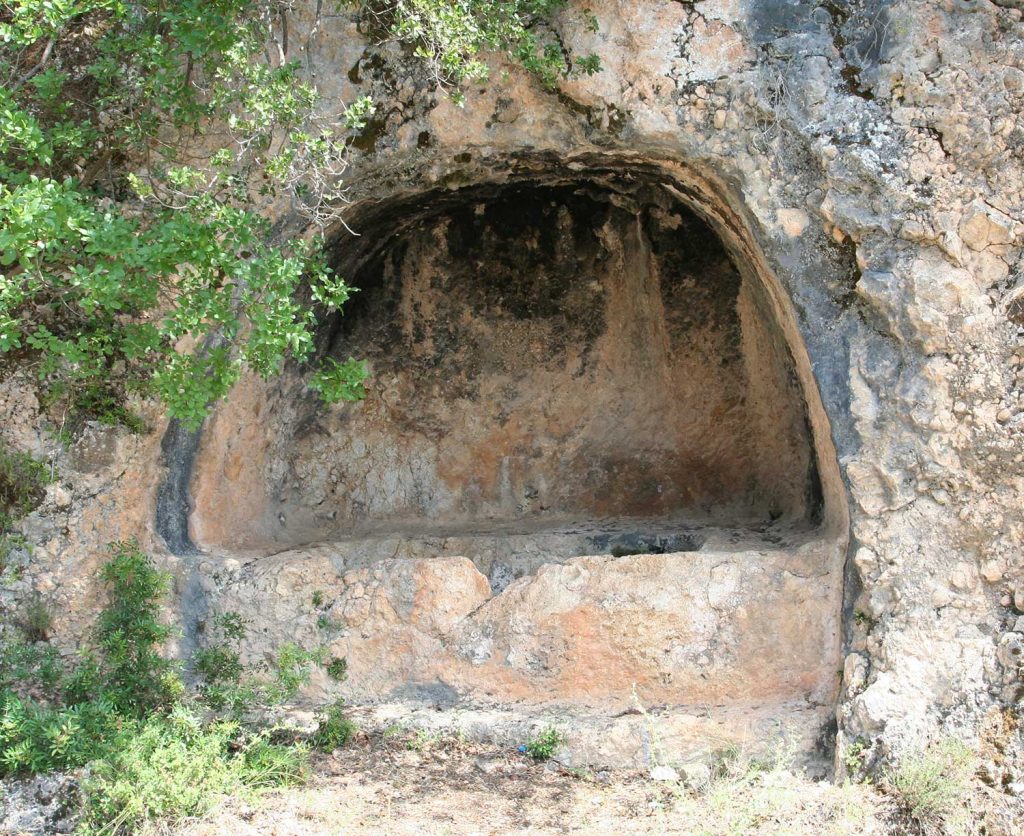Same’s four cemeteries (the northern, southern, eastern and western cemetery) developed outside the city’s limits. Only part of the eastern cemetery was included in the city after the construction of fortification walls. The southern, northern and western cemeteries started getting organized since Archaic times, while Geometric tombs were also found in the first one.
The up-to-now available excavation evidence shows that the South Cemetery was the most extended of all cemeteries and had the longest use duration. It is the one that offers most of the evidence on the Samaians’ burial practices, since most research projects have taken place in the area it occupies. It was a monumental cemetery, including burial precincts, while statues and monuments have been found on either side of a street leading inside the city to the south. The cemetery includes the burial peribolos (precinct) of the 1st cent BC – 1st cent. AD which is today visible in the OTE plot, on Ioannou Metaxa Str., and the Late Roman vaulted chamber – mausoleum at the junction of Ioannou Metaxa Str. 13 and an unnamed street.
Finally, at the north cemetery it was common to hew the area’s rocky ground in order to form out tombs.
Tomb types: In Archaic times, it was apparently preferred to follow the practice of enchytrismos (burial inside a pot) or of placing cremation remains inside vases (inurned cremations). In the Classical, Hellenistic and Roman periods there are stone-built monuments, cist tombs made of stone plaques, hewn in bedrock, tile-covered tombs (of clay tiles), enchytrismoi of young children and infants (inside pots) and simple pits. Tombs were often included in periboloi (precincts). In addition, the construction of built cist tombs is frequent in the Roman period, while there are also vaulted chambers/ mausolea.






